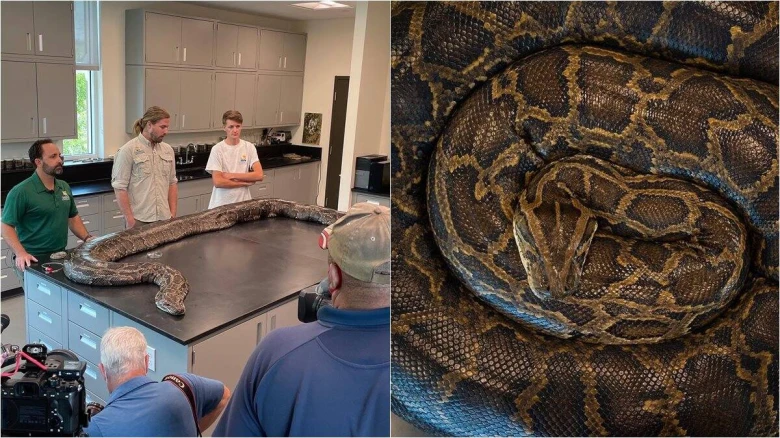The researchers reportedly tried a novel study method that tracked breeding grounds by implanting radio transmitters in male snakes.
Digital Desk: A giant Burmese python
was captured by US researchers, who consider it to be the biggest one ever seen
in Florida.
According
to the Conservancy of South-West Florida, the snake was carrying 122 eggs,
weighed 98 kg, and was almost 18 feet long.
According
to the experts, the female serpent is regarded as an invasive species in
Florida.
The
reptile had hoof cores in its digestive tract, according to a necropsy
performed after it was captured. It implied that a tailed deer was probably its
last meal. The snake was found to be carrying a "record number" of
122 eggs, according to the examination.
A
team of trackers and wildlife biologists from the Conservancy of Southwest
Florida managed to capture the snake.
The
researchers reportedly tried a novel study method that tracked breeding grounds
by implanting radio transmitters in male snakes.
When asked Ian Bartoszek, a wildlife
biologist and the programme manager for environmental science at the
Conservancy about the best way to find the needle in the haystack he answered our
male scout snakes are lured to the larger females around in a manner similar to
a magnet.
In his words, "the removal of
female pythons plays a vital role in disrupting the mating cycle of these apex
predators that are wrecking havoc on the Everglades environment and depriving
other local species of their food sources."
One of the largest snake species in the world is the
Burmese python. They are indigenous to a substantial portion of Southeast Asia
and are listed as Vulnerable on the IUCN Red List.
How did they enter Florida, exactly?
Burmese
pythons, according to researchers, were initially brought to Florida as exotic
pets, but after escaping or being released by their owners, the species'
population in the Everglades soon grew.
bold">According to Field and Stream, the 1992 hurricane Andrew is to blame for
the species' exponential growth in Florida. Andrew destroyed a Burmese python
breeding facility and caused the release of hundreds of snakes into the wild.

Leave A Comment